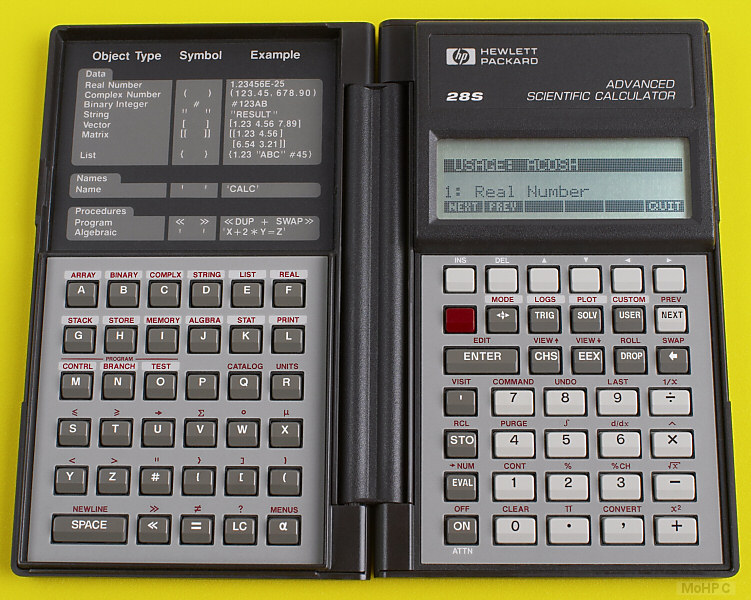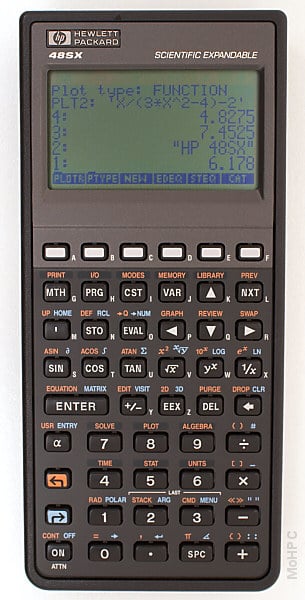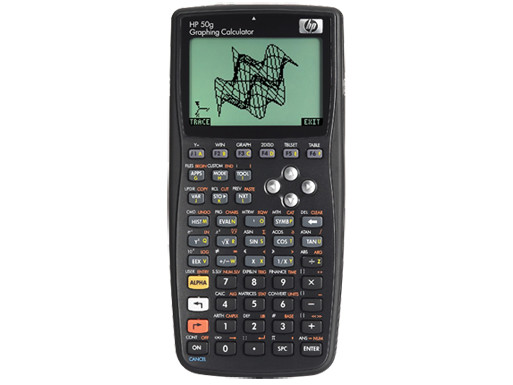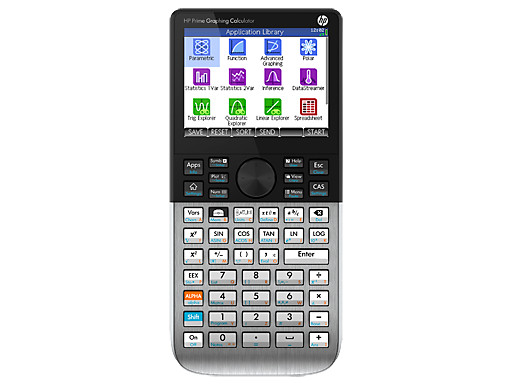When I started college in 1989, I was going to school to get my Bachelor’s Degree in Electronics Engineering Technology. Graphing calculators were brand new; before that, we had Texas Instrument calculators as well as Casios, and my first weapon of choice for busting out math problems was an HP 28S. Do you remember?
The image above, courtesy of the HP Calculator Museum, was the first HP Calculator I ever bought. This calculator made busting out math problems pretty easy. I could graph out complex equations as well as trigonometry problems that I needed to work on while I was obtaining my degree. Unlike the other calculators, the HP used something called RPN to enter in the math equations. RPN stands for Reverse Polish Notation. RPN meant you had to enter the numbers in first and put them on a stack. Then you hit the operators in.
For example, if you wanted to say 45+46, you’d type 45 enter 46 enter and then the plus sign to add them. This seemed weird at first, but once you got the hang of it, it was simple. The 28S had an infrared output on the top of it, although I never used it then. the 28S also made beeps when you used it, and it was programmable. the calculator was just cool to me then. However, like mobile phones today, calculators developed rapidly in this time, and the 28S soon wasn’t enough, so I went out and bought the HP-48SX to replace the 28S.
The HP 48SX had a bigger screen, which was the main attraction for me, plus it had a much more traditional calculator design. It too could also make sounds, and it had a infrared port which I did take advantage of then by purchasing a HP 82240B infrared printer. This helped me do math home work because I could print my graphs instead of sketching them down on paper. You could really do some amazing things with the grey-scale screen of the 48SX back then.
HP Graphing Calculators Today
HP still makes calculators today, in fact, they have a modern version of the 48SX in the HP 50G. The 50G runs on an ARM based processor like many smartphones today, and it still has a greyscale screen. In many ways it’s just like the 48SX, except that it has USB cable to connect it to your computer to offload and load equations. In many ways, it’s superior to the 48SX, however the old HP calculators were mechanically solid with keys that would never give out, and they were built to take a beating.
The new graphing calculators aren’t near as solid as the those of old, but they are still being used in many programs today — although it’s MUCH easier to simply use your phone to do a lot of the same functions. You can even install a HP calculator app for your phone and do a lot of the same things you could do on the 48SX and now the 50G. The 50G is still available direct from HP for $129.99. I also found the infrared printer on Amazon for $159.99.
HP also has made a newer, more advanced calculator in the HP Prime Graphing Calculator. This calculator has a color touch screen on it and is rechargeable. It also comes with a USB connection kit. It can be had for $149.99 direct from HP.
Why should I (or you) care about these today?
Well, I don’t need one for my job or my everyday life — and you probably don’t either — but there may be a few reasons it might be something we’d want to have. Similar to e-ink based devices like the Kindle, there’s little distraction to the work at hand when you use one of these. There are no other apps to distract; no messaging, just calculating. So if you are trying to concentrate on crunching some numbers then one of these may be something you’d want. Then you have to consider that the battery life on these calculators is many times better than using a smartphone or computer for doing calculation work. Finally, devices like this are made for calculating; it’s all they do. In some ways they can be better than an app on your smartphone, and of course they will last much longer than your phone at this point. I read in a forum that someone just retired their 48SX last year and replaced it with a 50G. That is over 20 years of service for one device if they bought the calculator in 1990 when it was released! Try doing that with a smartphone.
Sadly, for most it’s just not relevant today. Alton Brown has a dislike of monotasking devices in the kitchen, and in the class room and engineering spaces that is exactly what these would be. So I don’t see HP selling bunches of these … but if you need a reliable calculating device, then you should look no further.
For more on HP calculators check out the HP Calculator Museum and hpcalc.org.




